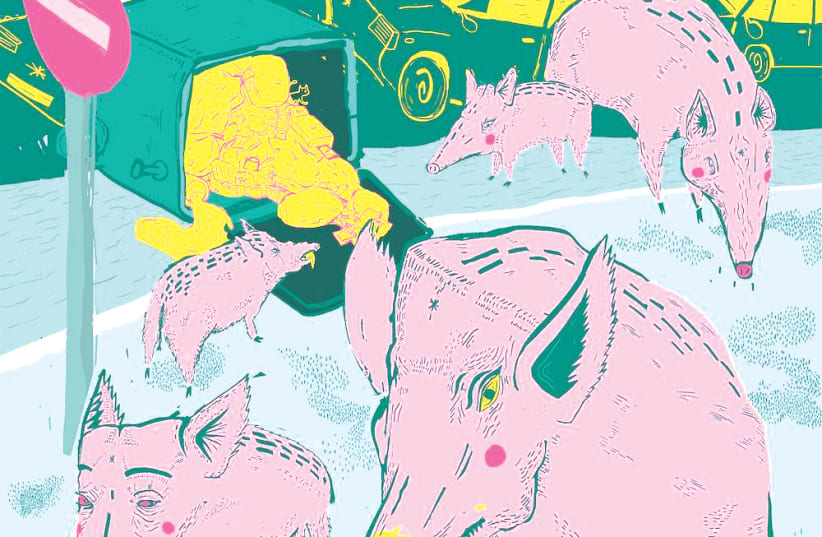Me, the stranger Trailer from idobb on Vimeo.The viewer can access eight different “plots” of his personal experiences – from rocket attacks to serving in the army – similar to Perry creating a fictional town where each part represents an autobiographical event.With music by Taras Roskoshny and coding by Katia Podolsky, the game was created in 2019 while Beck was doing an MA in visual communication at the Academy of Art Weißensee in Berlin.In reference to the 1958 flower poster, for example, Beck presents an animated flower dancing in a vase. In another animation clip he shows a man climbing stairs. Haifa – built on the slopes of the Carmel mountain – is a city where locals climb stairs to get from one street level to the next and is a familiar local experience. The exhibition also includes large cartoon boars, smiling but perhaps a bit hungry or playful. These are placed next to cartoonish garbage cans and other aspects of Haifa life.The interesting combination of retro-style video games, local history and ironic captions brings to mind Israeli street artist Know Hope (Addam Yekutieli) or US artist Raymond Pettibon, illustrating how truly international Israeli art is currently, while keeping its local flavor. Ashkenazi points out that gaming is not limited to video games; visitors may also explore and rearrange the historical posters from the collection when they visit the exhibition.Haifa City Museum is located at 11 Ben Gurion Boulevard, Haifa. The exhibition Me, the Haifian reopens on Thursday, June 25 at 7 p.m. after closing temporarily due to the COVID-19 outbreak. www.hcm.org.il
Ido Beck focuses on history, video games, wild boars in Haifa
In his new exhibition at Haifa City Museum, Beck gains inspiration from history, video games and wild boars gone urban.
